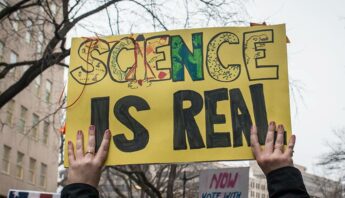The so-called “transparency in science” rule, first proposed by former EPA Administrator Scott Pruitt in 2018, is basically intended to limit EPA’s use of scientific studies.
The so-called “transparency in science” rule, first proposed by former EPA Administrator Scott Pruitt in 2018, is basically intended to limit EPA’s use of scientific studies.
Under the policy, EPA would give greater consideration to any kind of study where the raw data are publicly accessible. However, some studies — public health research in particular — have data that are not meant to be public, as these studies involve individuals who allow for use of their personal health information only if the details of their lives are kept confidential.
This rule has shown up as proposed legislation in the House several times in the past, but recently proposed changes will make it even worse for science and public health.
EPA will give “greater consideration”. . . to what kind of data?
The original anti-science rule EPA proposed was restricted to dose-response data and models, but now it’s meant to cover all data reviewed by the agency for rulemaking.
As I mentioned above, some studies have data that are not meant to be publicly accessible. Confidential business information (CBI) and personally identifying information (PII) fall under these categories. An example of data covered by CBI would be the exact ingredients of a pesticide, not just the name of the active ingredients (which is the information that is on the pesticide label).
Here’s an example of ethical confidentiality in public health research that involved PII: The Columbia Center for Children’s Environmental Health did a study that was the basis of EPA’s proposal to ban agricultural uses of the brain-harming pesticide chlorpyrifos in 2016. In this public health study of mothers and their children, certain aspects of the data were to remain confidential, though the researchers could still publish their findings in peer-reviewed journals. For that study, which had a relatively small number of participants, the researchers did not believe they could share the raw dataset with EPA in a way that ensured the participants’ confidentiality.
Who would this policy serve?
The proposed rule changes will allow “tiered” access to data, with the most restricted access tier “limited to authorized researchers and not possible for the general public.” The proposal also includes the possible creation of a data repository. This is so that “stakeholders” could “reanalyze the data.” In reality, the tiered approach seems to be so that stakeholders have better access to raw data used in peer-reviewed journal articles.
But which stakeholders are interested in accessing the raw data? Most often, those who would want to reanalyze data that EPA uses to make decisions are industry, who have a vested interest in less regulation. And by the way, access to the kind of data repository that EPA is considering (modeled on the Center for Disease Control’s Research Data Center) is really expensive.
These proposed changes are under the guise of increasing transparency, but in reality they are not serving the public — instead, they’re serving the interests of industries that don’t like the use of public health data in rulemaking. The policy states that EPA will “give greater consideration to studies where the underlying data and models are available in a manner sufficient for independent validation.”
The proposal is meant to apply to any new rule proposed by EPA, or regulations that are about to be finalized. So even if EPA has used a study before in making a policy, all data for new rules will be reviewed with an eye to prioritizing studies that allow for public or tiered access to all of the data — which means EPA would likely deprioritize public health studies that have collected PII across the board.
Strangling science
EPA’s Scientific Advisory Board had a number of very reasonable concerns about the transparency rule. Many scientists stated that they did not think that personally identifying information could be fully protected under this policy should such data be used, and cited legal and ethical concerns over this conflict. In addition, concerns were voiced over whether this policy would allow EPA to use “the best possible science” in making its regulations.
Here’s a historical example of a policy that would have been affected by this “transparency” proposal: EPA’s 1990 Clean Air Act Amendments were based on Harvard University research, known as the Six Cities study, that made use of confidential data from study participants. The researchers found that mortality risk is strongly associated with increased concentrations of fine air pollution particles, known as PM2.5. The study also found that life expectancy was shortened by two to three years in cities that had worse air pollution (but were still within the air pollution standards at the time).
As a result of the Six Cities study, EPA regulated PM2.5. In 2011, EPA estimated that regulating particulate air pollution saved 160,000 lives in 2010, and in 2020, the Clean Air Act Amendments will prevent over 230,000 early deaths. Of course, that’s assuming the very same agency doesn’t enact policies that roll back the progress made over the past 30 years.
Lives are at stake
When science and information are ignored on a policy level, people die. We have the evidence of that right in front of us now, as we experience how difficult it is to contain the COVID-19 pandemic with anything less than these quite strict, evidence-based measures that work, but are clearly having dramatic impacts on the economy. EPA’s policies can have a life or death significance to them, too, which is what is so concerning about this new rule.
The good news? The comment period on this complicated policy is open until May 18, 2020, so you can still express your concern over this non-transparency rule. Submit your comments and find supporting documents for the policy here.








